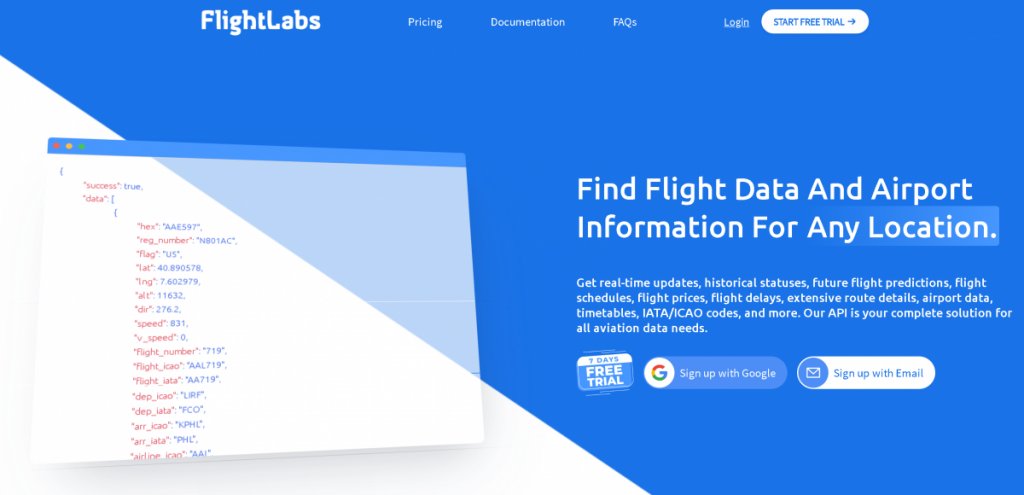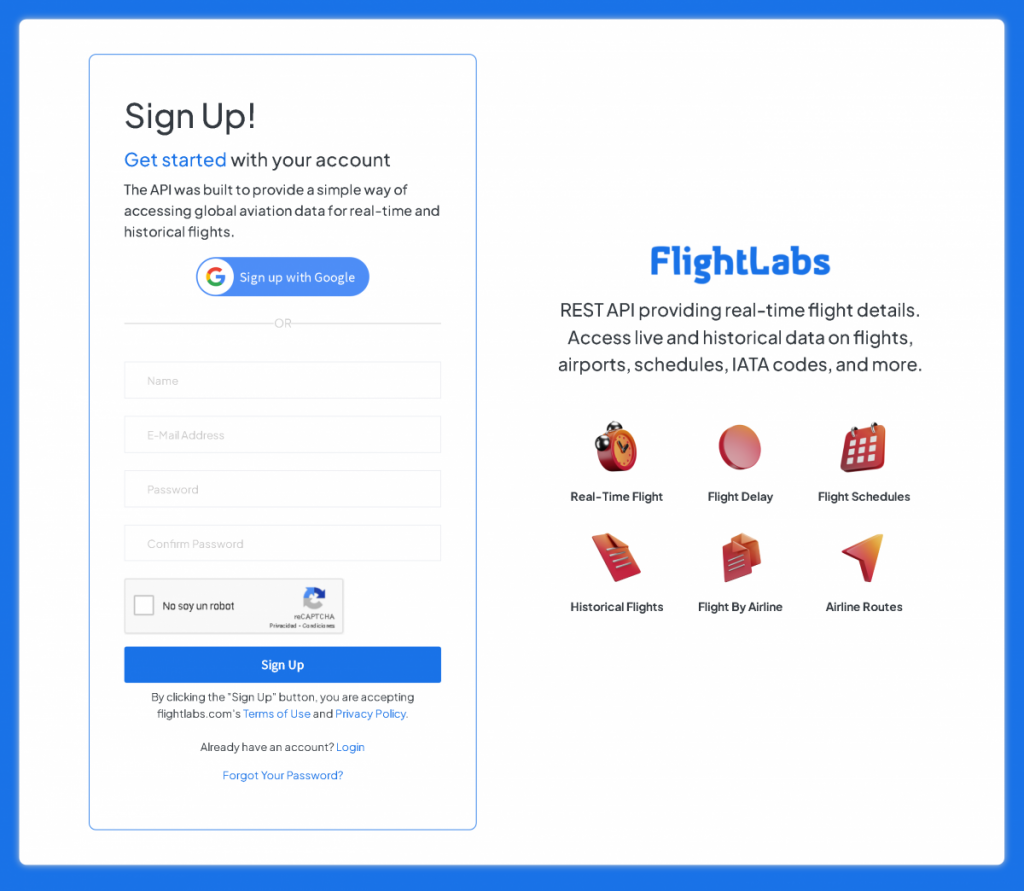In today’s data-driven world, access to comprehensive and accurate information is crucial for both developers and businesses. One area where this need is increasingly felt is in the realm of aviation data, particularly historical flight data. This is where a Historical Flights API come into play. These APIs provide access to a wealth of past flight data, enabling various applications ranging from travel planning to performance analysis.
This article explore a leading provider, FlightLabs, detailing its capabilities and offering a tutorial for developers on how to get started with this robust API. By the end, you’ll understand why Historical Flights APIs are revolutionizing the way we interact with aviation data.
What are Historical Flights APIs?
Historical Flights APIs are specialized interfaces that allow users to access detailed records of past flight data. These APIs provide information on flight paths, schedules, delays, cancellations, and various other metrics related to flights that have already occurred. By tapping into vast databases of historical aviation data, these APIs empower developers and businesses. Allowing so, to retrieve and analyze flight information spanning days, months, or even years. This data can be leveraged for a multitude of purposes, from creating travel applications to conducting comprehensive market analysis.
At their core, Historical Flights APIs function by querying extensive databases that store historical flight data. When a request is made through the API, it processes the query and retrieves the relevant data, presenting it in a structured format. The API typically uses various endpoints to allow specific types of data retrieval, such as flight status, route information, or passenger data. Developers can integrate these endpoints into their applications, enabling seamless access to historical flight records. This process involves authentication and API key management to ensure secure and controlled access to the data.

The Importance of Historical Flights APIs in Development and Business
For developers, Historical Flights APIs open up a realm of possibilities. They can be used to create applications that provide users with insights into flight patterns, historical performance, and trends. For instance, a travel app might use historical data to suggest the best times to book flights based on past pricing trends and flight availability. Additionally, flight simulators and training programs can utilize historical data to create realistic scenarios and improve pilot training. The versatility of these APIs means that developers can innovate and create applications that offer unique value propositions to their users.
Businesses across various industries can also benefit from Historical Flights APIs. Airlines can analyze historical data to optimize their flight schedules, reduce delays, and improve overall efficiency. Travel agencies can enhance their offerings by providing clients with data-driven recommendations and insights. Moreover, financial institutions and market analysts can use flight data to gauge industry trends, assess the impact of events on travel patterns, and make informed investment decisions.
Spotlight On The Best Historical Flights API: Overview of FlightLabs

FlightLabs stands out as a premier provider of aviation data APIs, offering a comprehensive suite of features designed to meet the needs of developers and businesses alike. The FlightLabs is renowned for its reliability, accuracy, and extensive coverage of both real-time and historical flight data. Whether you are building a travel app, conducting market research, or developing aviation-related software, FlightLabs provides the tools and data necessary to bring your projects to life.
One of the key strengths of the FlightLabs is its diverse range of endpoints, each tailored to specific data retrieval needs. The Real-Time Flight endpoint allows users to access up-to-the-minute information on ongoing flights, including status updates, delays, and cancellations. This is particularly useful for travel apps and services that need to provide real-time updates to their users.
The Historical Flights endpoint is where FlightLabs truly excels. This endpoint provides access to a vast archive of past flight data, enabling users to retrieve detailed information about flights that have already occurred. This includes data on flight paths, schedules, performance metrics, and more. The ability to access historical data is invaluable for applications that require trend analysis, performance reviews, and historical comparisons.
Getting Started with FlightLabs: Step-by-step
Integrating the FlightLabs into your projects is a straightforward process. Here’s a simple tutorial to get you started:
- Sign up and get your API key: Begin by creating an account on the FlightLabs website. Once registered, you will receive an API key that you will use to authenticate your requests.

- Set up your development environment: Ensure you have the necessary development tools and libraries installed. This typically includes setting up a coding environment in your preferred programming language.
- Make your first API request: Use the API key to authenticate your requests. Start by making a simple request to the Historical Flights endpoint to retrieve past flight data. For example, you can request data for a specific flight by using its flight number and date.
- Handle the API response: The API will return data in a structured format, usually JSON. Parse this data in your application to extract the information you need.
- Integrate into your application: Once you have successfully retrieved and parsed the data, integrate it into your application. This could involve displaying historical flight data to users, performing data analysis, or using the data for other purposes specific to your project.
https://www.youtube.com/watch?v=1pueN0P-UC8
Conclusions
The advent of Historical Flights APIs has significantly transformed how we access and utilize aviation data. For developers, these APIs provide a powerful tool to create innovative applications that offer valuable insights and services to users. For businesses, the ability to analyze historical flight data translates into strategic advantages and enhanced operational efficiency. Among the various providers, FlightLabs stands out for its comprehensive features, reliability, and ease of integration.
By leveraging FlightLabs , developers can unlock the full potential of historical flight data, creating solutions that are both impactful and insightful. As the aviation industry continues to evolve, the role of Historical Flights APIs will only grow, driving new possibilities and advancements in how we interact with flight data.
Related Post: Top API Marketplaces For Developers: A Comprehensive Guide

